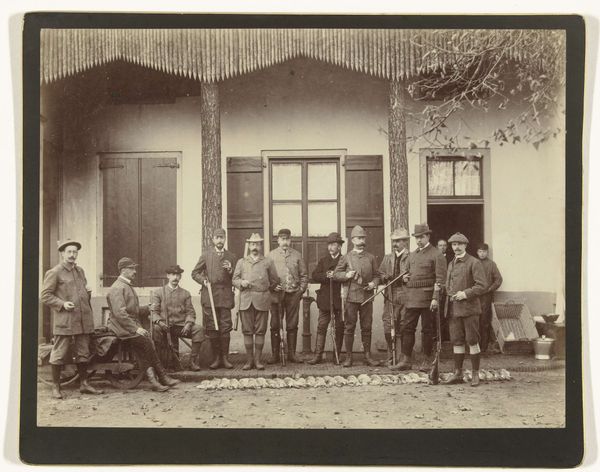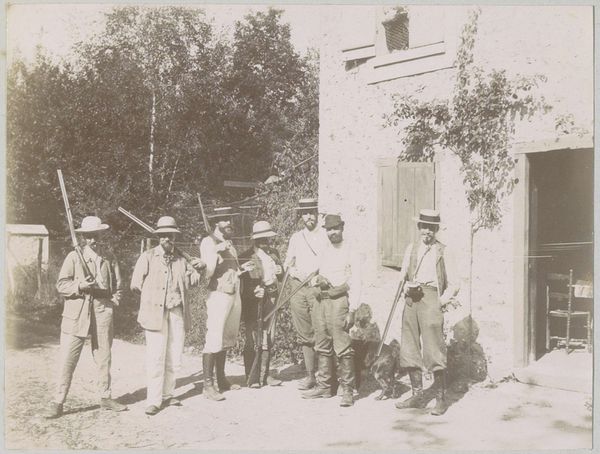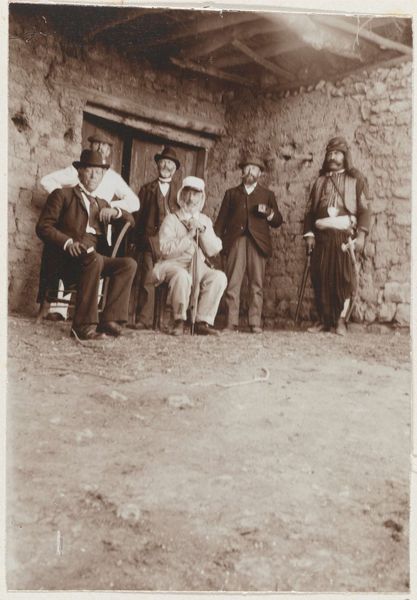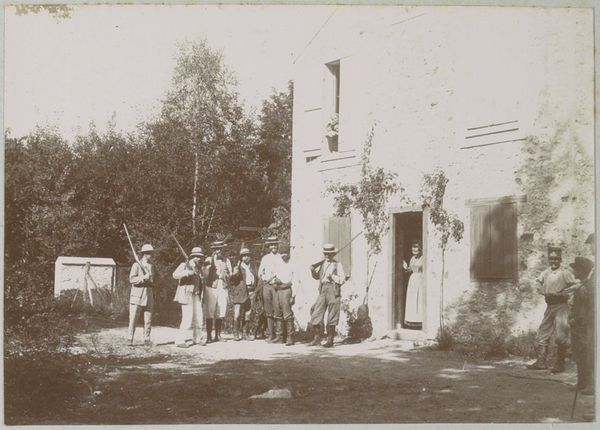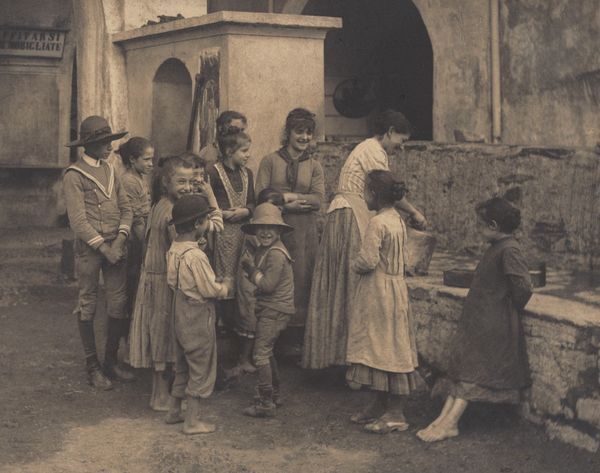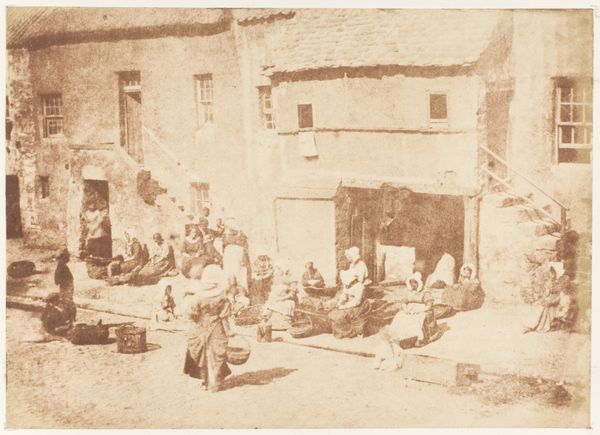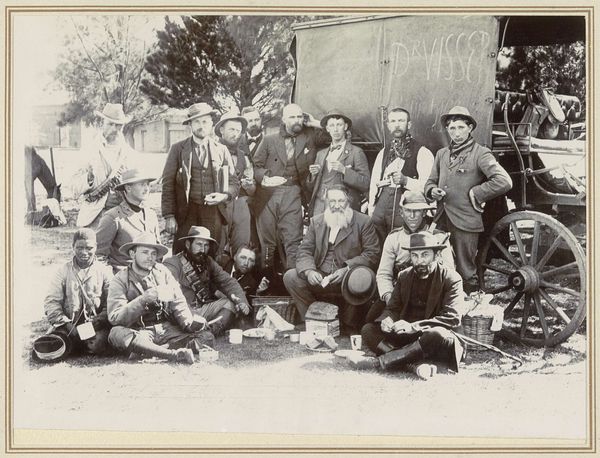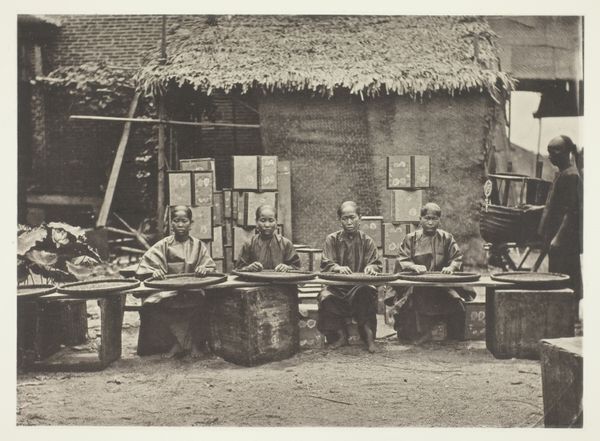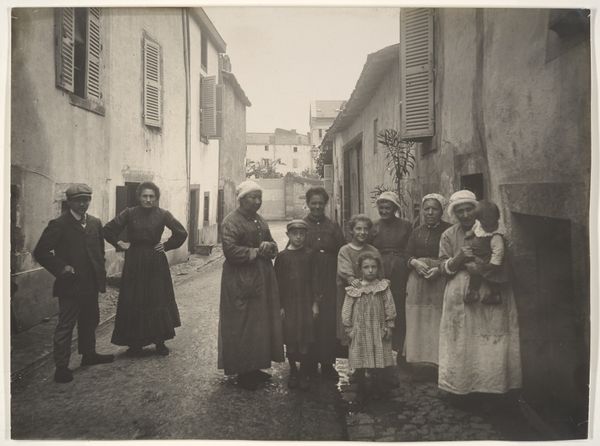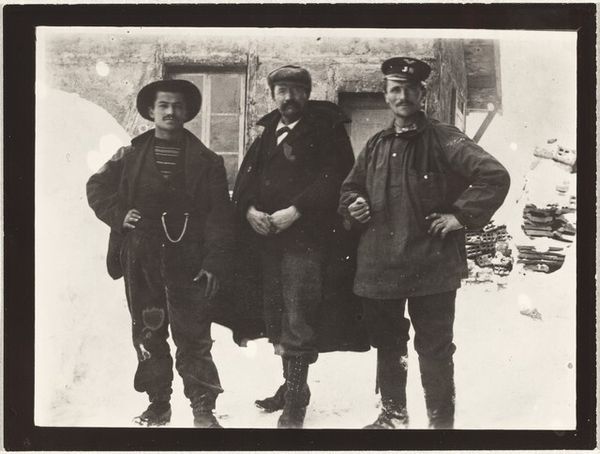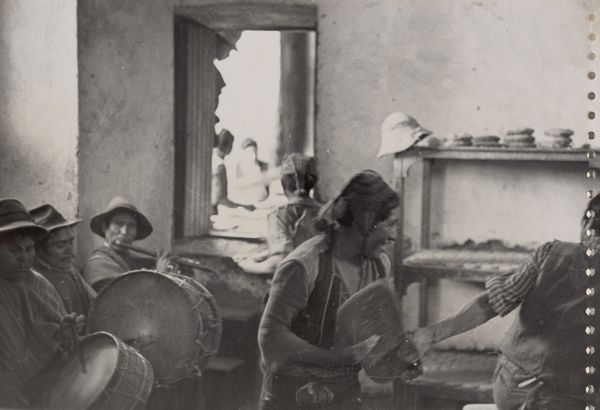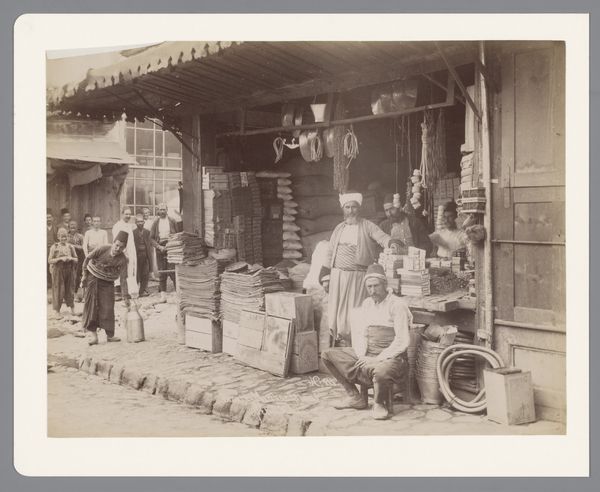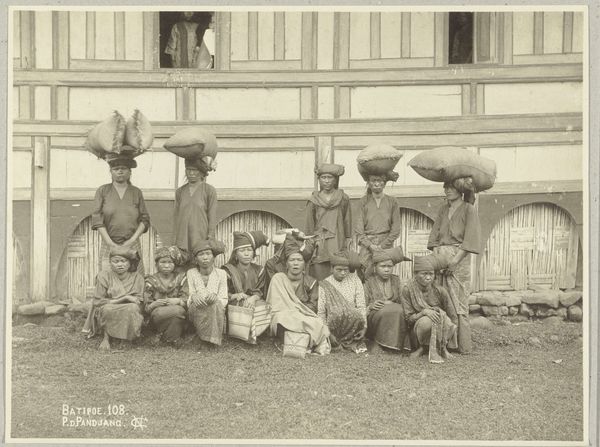
Groepsportret met tien mannen, vermoedlijk Chinese dragers 1860 - 1885
0:00
0:00
photography
#
portrait
#
16_19th-century
#
photography
#
group-portraits
#
orientalism
Dimensions: height 191 mm, width 241 mm, height 311 mm, height 404 mm
Copyright: Rijks Museum: Open Domain
Curator: This is a photograph attributed to Raimund von Stillfried, titled "Groepsportret met tien mannen, vermoedlijk Chinese dragers," dating from around 1860 to 1885. It resides here at the Rijksmuseum. Editor: A rather striking tableau. The monochromatic palette immediately establishes a mood of somber formality, but I find it punctuated by the rhythmic arrangement of figures, particularly the dynamic lines of the bamboo and ropes they hold. Curator: It’s a fascinating example of orientalist photography, reflecting Western perceptions of the East during that era. Group portraits such as this one fulfilled the Western demand to capture so called ‘exotic’ people, customs, and landscapes. Consider how these images were circulated, reinforcing colonial power dynamics and influencing public opinion. Editor: Precisely. The composition itself betrays the photographer’s intentional ordering; note the deliberate arrangement. It's like a constructed narrative playing out across the frame. And the subtle variations in the texture of their clothing set against the rough woven background provides subtle depth in the restricted monochrome color space. Curator: Absolutely. The men are believed to be Chinese laborers. Think about the context: European colonialism, the Opium Wars, and the increasing Western presence in China. What narratives are constructed around these figures through the Western gaze? The image may represent their place in the societal order and economic exploitation they were subjected to at the time. Editor: And how that gaze affects our reading. Do the ropes symbolize their work, or subtly, something else? The hats especially: note the contrast between their forms – and that giant cone-shaped one held on the right. The objects themselves are rendered in exquisite detail thanks to early photography processes, lending them a heightened presence, as though evidence to be analyzed. Curator: Indeed. By considering this image in its socio-political moment, we are urged to question not just the image itself, but how the consumption and display of such photographs upheld problematic colonial viewpoints. Editor: Well, considering the intrinsic, constructed, visual framework and compositional rhythms and sociohistorical elements at play offers many layers. Thank you for this discussion. Curator: Thank you.
Comments
No comments
Be the first to comment and join the conversation on the ultimate creative platform.
